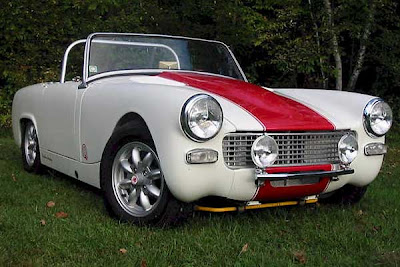
Austin Healey SpriteAustin-Healey Sprite (Mark III, Mk III) Parts 2Picture Of Austin Healey SpriteAustin Healey SpriteAustin-Healey Sprite (Mark III, Mk III) Parts 2It has been suggested here that there was a "short run of vehicles (unknown number) in late 1963 with the Austin Healey Sprite Mk II body/interior but with the Austin Healey Sprite Mk III undercarriage/suspension modifications". Although no source is given for this assertion, the basis may be more than speculation. There are numerous recorded instances throughout Austin Healey Sprite and Midget production where specification changes do not precisely concur with model changes. At the...
 RSS Feed
RSS Feed Twitter
Twitter







 11:44 PM
11:44 PM
 MINI Cooper Cars Blog
MINI Cooper Cars Blog

















